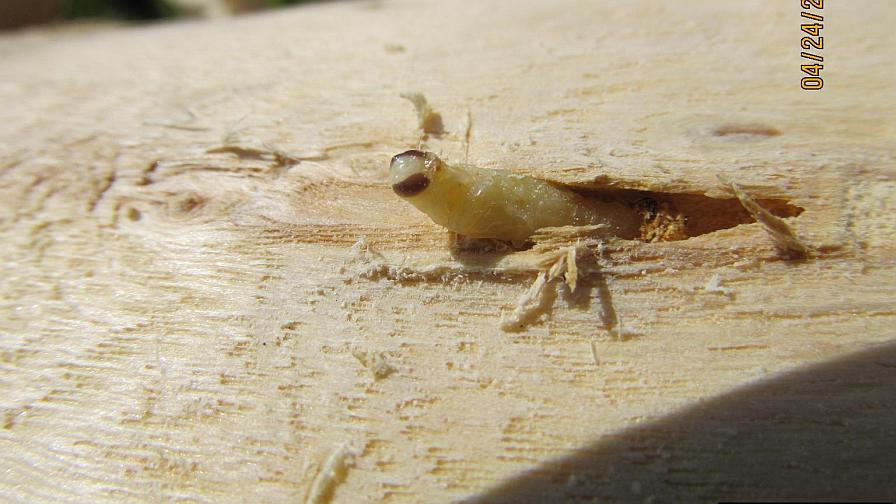Hate to Be the Borer of Bad News — Major Pest Concern Moves West

Up close and personal with emerald ash borer pupae.
Photo by Kenneth R. Law, USDA APHIS PPQ, Bugwood.org
Twenty years ago last summer, the emerald ash borer (EAB) introduced itself to the U.S. public. There was no welcoming committee. Ash trees and forests in general, certainly on the eastern side of the country, have never been the same since the arrival of the exotic beetle/invasive pest.
First identified in Michigan and Ontario in 2002, EAB didn’t take long to cross borders and hit home for me. It reached Ohio in 2003 and Cuyahoga County in 2006. Until then, I hadn’t really paid much attention to invasive pests.
That all changed abruptly for a state in which one of 10 trees — or 3.8 million total — was ash. You didn’t have to drive far to see posted warnings about transporting ash firewood within and between states. I recall the side-by-side photos of an ash tree-lined neighborhood street in Toledo — one photo before EAB (June 2006), the other three years after (August 2009). Upsetting how quickly death came to town.
EAB wound up spreading to all 88 counties in Ohio. Infested with the insect, ash trees — all five species native to Ohio — generally died within three to five years if not treated early enough. (And, no, I don’t recall knowing anyone who had the wherewithal to treat his or her own ash tree.) Without treatment, there is a 99% mortality rate.
What’s interesting about EAB is the insect does little harm to its hosts in its native Asia, much like most of the native wood borers in the U.S. seem to coexist
just fine with their native trees. In a new ecosystem, however, EAB became the most destructive forest pest to date in North America.
So destructive, it appears, that I haven’t had to think about EAB in recent years. An interactive yearly timeline on the website emeraldashborer.info indicates a new case of EAB hasn’t occurred on Ohio soil since 2014. I assume the pest kept obliterating to the point in which it finally ran out of ash trees to obliterate.
‘MAJOR ISSUE’ MOVES WEST
Unfortunately, western states have plenty of healthy ash trees from which to pick. And they are nervous in the Pacific Northwest. I learned of this while writing about olive tree growing in the Pacific Northwest.
Heather Stoven, an Extension specialist with Oregon State University, closed an interesting and otherwise light presentation with a warning about EAB, which, on June 30, 2022, was discovered for the first time in Oregon, on the eastern side of the mountains in Forest Grove.
“It’s going to be a major issue in general,” Stoven says, noting that 30 states have now been inflicted. Amazingly, this directly affects the two dozen or so olive growers in Oregon. Olive trees happen to be closely related to ash trees. Back here in Ohio, a researcher performed lab tests that determined EAB can, in fact, complete its life cycle in olive trees.
“We don’t know exactly what’s going to happen in real life yet, but it’s definitely going to cause a problem and at least some branch die-back and death,” Stoven says. “Oregon ash is a native tree here and then also spreads up into Washington and down into California. So I think this is going to be an issue for California olives.”
And as has been the case in the East and Midwest, “It’s going to be very sad here in the Pacific Northwest as well,” Stoven says.










